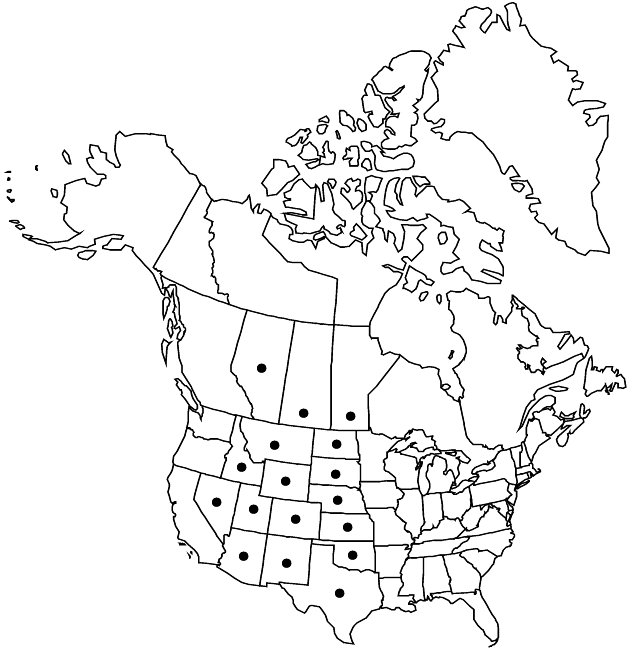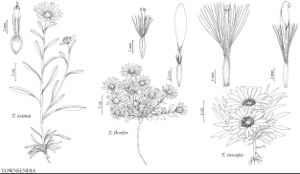Townsendia exscapa
Mem. Torrey Bot. Club 5: 321. 1894.
Perennials, 1–3 cm (± pulvinate). Stems ± erect; internodes 0.1–1 mm, ± hirsute to strigose or glabrate. Leaves basal and cauline, blades ± spatulate to narrowly oblanceolate or linear, 12–40 (–75) × 2–6+ mm, not fleshy, faces ± strigillose. Heads ± sessile (usually nestled among rosette leaves). Involucres ± hemispheric, (10–) 12–25+ mm diam. Phyllaries 30–45 (–60) in 4–6+ series, the longer narrowly lanceolate or linear to subulate, (10–) 12–14 (–17) mm (l/w = 6–9), apices obtuse to acute, abaxial faces sparsely strigillose or glabrate. Ray-florets 11–40; corollas white adaxially, laminae (9–) 12–18+ mm, glabrous abaxially. Disc-florets 100–150+; corollas 6.5–9 (–12+) mm. Cypselae 4 (–6+) mm, faces hairy, hair tips glochidiform; pappi persistent; on ray cypselae 20–30 setiform scales 6–8+ mm; on disc cypselae 20–30+ setiform scales 6.5–11+ mm. 2n = 18.
Phenology: Flowering Mar–Jun(–Aug).
Habitat: Openings in pine forests, meadows, gravelly hills, sandy soils
Elevation: (1300–)1600–2300(–3300) m
Distribution

Alta., Man., Sask., Ariz., Colo., Idaho, Kans., Mont., Nebr., Nev., N.Mex., N.Dak., Okla., S.Dak., Tex., Utah, Wyo., Mexico (Chihuahua)
Discussion
Selected References
None.
Lower Taxa
"broader" is not a number.
